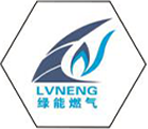
Oct . 11, 2024 05:24
Back to list
reducing station
The Role of Reducing Stations in Modern Infrastructure
In the intricate web of modern infrastructure, reducing stations play a pivotal role, particularly in the context of energy transmission and distribution. These facilities are essential in managing the pressure of natural gas and other energy resources, ensuring that they can be safely and efficiently delivered to consumers. As global energy demands continue to rise, understanding the purpose and functioning of reducing stations becomes increasingly important.
What is a Reducing Station?
A reducing station, often referred to as a pressure reduction station (PRS), is a facility that reduces the high pressure of gas from transmission pipelines to a lower pressure suitable for distribution networks. This is crucial because transmission pipelines operate at very high pressures to transport gas over long distances, ensuring that it remains in a gaseous state. However, by the time the gas reaches the end-users, such as homes and businesses, it needs to be at a much lower pressure to be safely utilized by appliances and equipment.
Importance of Pressure Regulation
The regulation of gas pressure is vital for several reasons. First and foremost, safety is a significant concern. High-pressure gas can be hazardous, leading to leaks, explosions, or equipment failures if not managed appropriately. Reducing stations mitigate these risks by employing various technologies, such as pressure regulators and relief valves, to maintain safe operating conditions.
Moreover, effective pressure regulation contributes to the efficiency of the gas distribution system. By ensuring that gas is provided at an optimal pressure, reducing stations enhance the performance of appliances, reduce wastage, and improve overall energy efficiency. For example, gas heating systems designed for low-pressure gas will operate more efficiently without the strain of high-pressure inputs.
Components of a Reducing Station
reducing station

A typical reducing station comprises several key components. The first line of defense in managing gas pressure is the primary pressure regulator, which reduces the gas pressure from the high-speed transmission pipeline. This regulator is crucial in maintaining consistent output pressure, regardless of fluctuations in incoming pressure.
In addition to the primary regulator, reducing stations often include backup systems, such as secondary regulators and relief valves, that automatically activate during emergencies or system failures. This redundancy provides an extra layer of safety, ensuring that pressure levels remain within acceptable limits. Other components might include filters to remove particulates, meters to measure flow, and control systems to monitor operational parameters.
Technological Advancements
With the increasing reliance on technology in energy management, reducing stations are also evolving. The integration of smart technology and automation allows operators to monitor and manage pressure levels remotely. This not only enhances the safety and reliability of gas distribution systems but also enables predictive maintenance, which can prevent outages and reduce operational costs.
Furthermore, as the renewable energy sector grows, the role of reducing stations is becoming more complex. With the addition of biogas and hydrogen into existing pipelines, new challenges arise regarding pressure regulation and system compatibility. Reducing stations must adapt to these developments, incorporating advanced technologies and methodologies to accommodate a more diverse range of energy sources.
Conclusion
In summary, reducing stations serve as essential components of energy infrastructure, ensuring the safe and efficient delivery of gas to consumers. Their role in pressure regulation is crucial for maintaining safety, enhancing efficiency, and adapting to the evolving energy landscape. As we move towards a more integrated and dynamic energy future, the importance of reducing stations will only continue to grow, highlighting the need for continued investment in this vital aspect of our infrastructure. By understanding and advancing the technologies behind reducing stations, we can pave the way for a safer and more sustainable energy system.
Next:
Latest news
-
Safety Valve Spring-Loaded Design Overpressure ProtectionNewsJul.25,2025
-
Precision Voltage Regulator AC5 Accuracy Grade PerformanceNewsJul.25,2025
-
Natural Gas Pressure Regulating Skid Industrial Pipeline ApplicationsNewsJul.25,2025
-
Natural Gas Filter Stainless Steel Mesh Element DesignNewsJul.25,2025
-
Gas Pressure Regulator Valve Direct-Acting Spring-Loaded DesignNewsJul.25,2025
-
Decompression Equipment Multi-Stage Heat Exchange System DesignNewsJul.25,2025

